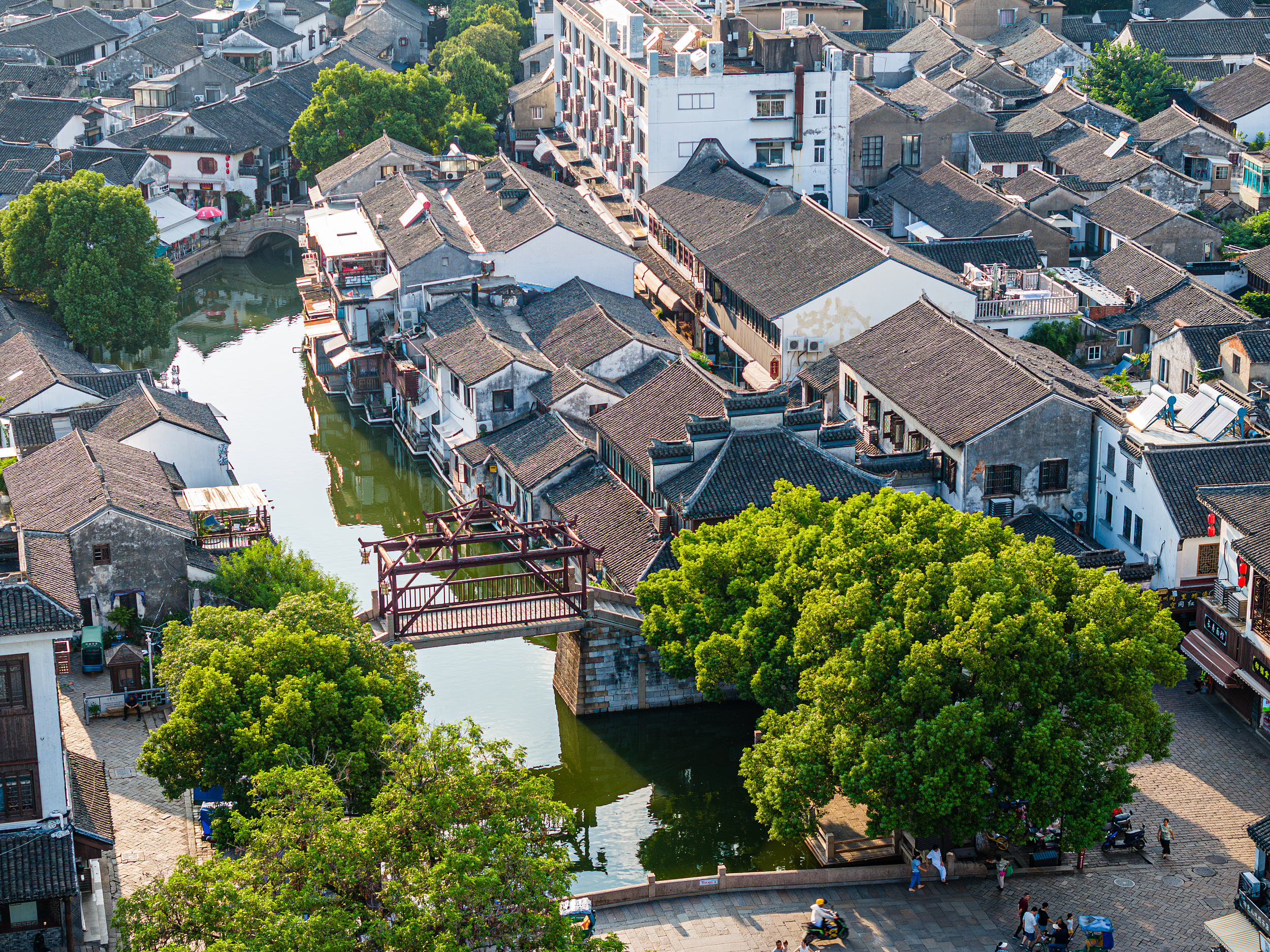Editor's Pick
China's traditional culture, nurtured by its 5,000-year-old civilization, is the root and soul of the Chinese nation. Regions across China have nurtured it in accordance with the spirit of the times to better serve socioeconomic development and ensure a high-quality life for the people. In this column, our reporters visit ancient villages and streets to showcase the preservation and inheritance of intangible cultural heritage for readers to have a glimpse of the creative transformation and innovative development of the fine traditional Chinese culture in the modern era.

An aerial view of the Tongli Ancient Town in Suzhou, Jiangsu province. (PHOTO: VCG)
By ZHANG Gailun, JIN Feng, LI Kun, LI Zhongming & CHEN Chunyou
Old streets are the carriers of a city's history, and ancient towns record the evolution of residents' way of life, which makes them valuable cultural heritages.
How can they be protected and promoted so that residents can cherish their memories? How can heritage be brought alive and its charm rejuvenated? Cities rich in cultural heritage are exploring new paths to do so.
In recent years, Suzhou in Jiangsu province in east China has utilized the spatial resources of the ancient city. It has improved the living conditions of the people by repairing and protecting their houses while developing historical and cultural areas.
Innovations in a water town
At the Tongli Ancient Town in Suzhou's Wujiang district, pavilions, towers and gurgling streams combine to produce a unique cultural charm.
Tongli is a typical water town in the lower reaches of the Yangtze River. While restoring cultural relics, it has followed the principle of not changing their original state. During the restoration, original materials and crafts are used as much as possible to preserve the authenticity of the ancient buildings.
Zhou Chunhua, director of the Cultural Relics Protection and Management Institute in Wujiang, told reporters the cultural relics protection team is using new technologies to repair ancient buildings.
"Infrared thermal imagers are used to detect damage. Combined with detailed historical data, we scientifically protect the authenticity of heritage," Zhou said.
A night tour experience
"The Humble Administrator's Garden" is a classical garden built in the 16th century by an imperial censor, Wang Xianchen. It was said that Wang intended to build a garden after retire and just do some gardening work like planting trees and cultivating vegetables there. He thought it was a simple life led by a humble man like him, hence the name of the garden.
Nowadays, the garden becomes a popular tourist attraction, bustling with people during the day. At night too the excursions continue, but the night tour is a different magical experience.
The night tour program was launched in December 2020. Visitors see the garden immersed in light and shadow under the moonlight, the prime areas being the central garden and an old mansion. The garden comes alive through the innovative use of lighting and sound technologies, which recreates the exotic birds seen in ancient paintings flying, the tree branches swaying and rivers flowing.
Li Wenle, in charge of the project, said novel technological means have been used to create the visual experiences.
"The cloud-controlled LED circular outdoor grille screen, pneumatic lifting devices for lighting, and lighting systems for ancient buildings used in the project are all industry firsts and patented," Li said.
"Regarding the relationship between the protection and utilization of Suzhou's historical districts, we adhere to the principle of utilizing cultural relics and buildings on the basis of protection, and strengthening protection through utilization, in order to bring cultural relics to life," said Wang Yongfa, an official at the Gusu Ancient City Protection Committee.
The trio will conduct a series of experiments in fields such as life science, fluid physics, combustion science and materials science. Notably, this is the first time that fruit flies have been taken on a Chinese space mission as experimental subjects. What made scientists choose fruit flies? What experiment will they undergo?
